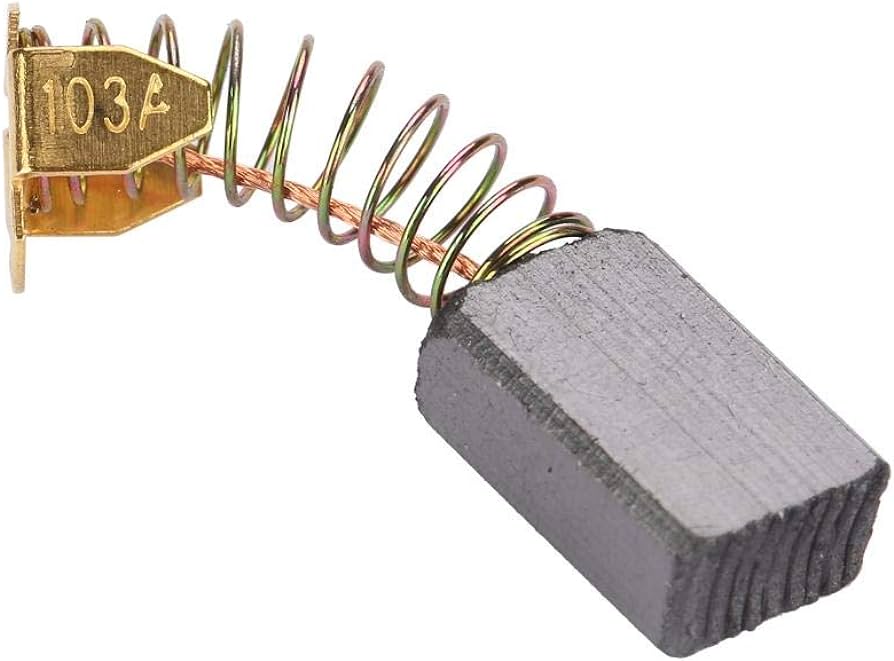Electrical motor brushes may seem like modest components in the grand machinery of technological advancements, but their role is far from minor. These seemingly insignificant parts are, in fact, the heartbeat of countless devices and machines that power our daily lives. From the car you drive to the vacuum cleaner that keeps your floors dust-free, electrical motor brushes play a pivotal role in converting electrical energy into mechanical energy, thus bringing movement to otherwise static objects.
The aim of this article is multifaceted. At its core, it seeks to demystify the world of electrical motor brushes for a diverse audience, ranging from engineering students to DIY enthusiasts and professional technicians. We’ll embark on a comprehensive exploration of these crucial components, delving into their various types, the intricacies of their maintenance, and their undeniable importance in ensuring motor efficiency. Whether you’re looking to understand the basic functionality of motor brushes, troubleshoot a malfunctioning motor, or simply satiate your curiosity about how things work, this article is designed to provide valuable insights. So, let’s turn the page and begin our journey into the electrifying world of electrical motor brushes, where we’ll uncover the secrets behind their spinning magic and demonstrate how these tiny giants keep our world in motion.
The Basics of Electrical Motor Brushes – Conducting Power, Commanding Movement
In the symphony of an electrical motor, where various parts work in harmony to produce movement, electrical motor brushes stand out as the essential conductors. But what are they exactly? In their most basic form, electrical motor brushes are the components that deliver electric current to the motor’s spinning armature. Typically made from carbon or graphite structures, these brushes make physical contact with the commutator or slip rings, effectively bridging the divide between static and moving parts to ensure the flow of electricity.
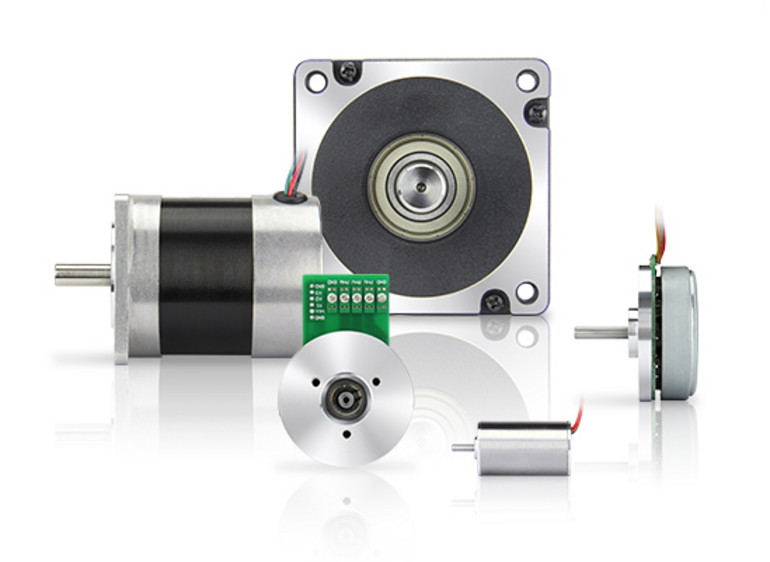
Function: The Unseen Heroes of Connectivity
Their primary function is akin to a baton pass in a relay race; the electrical motor brushes transfer energy from a static source to the rotating part of the motor. This action allows the motor to transform electrical energy into the mechanical energy that powers our equipment and machinery. Without this pivotal connection, the motor’s armature would not turn, and the essential devices we rely on daily would fall silent.
Operation: The Pulse of Performance
Consider a common kitchen blender as a real-world example. When you press the button to whip up a smoothie, the electrical motor brushes inside the blender’s motor work tirelessly. They make continuous contact with the spinning armature to ensure that the blades whirl at your desired speed. It is a microscopic dance between stability and motion, one that dictates the efficiency and effectiveness of the motor.
Material Matters: Crafting Conductivity
The materials chosen for manufacturing brushes are not a random selection. Each type serves a purpose and caters to a different set of demands. Carbon, for example, is favored for its excellent conductivity and relatively low cost. Graphite, on the other hand, is championed for its ability to withstand high temperatures and its self-lubricating properties. And some high-performance motors might use brushes made from precious metals like silver, which boast superior conductivity and reduced sparking.
Materials are selected based on various factors like the speed of the motor, the voltage it operates on, and the environmental conditions it faces. In the eyes of an industrial machine designer, choosing the right brush material is a decision that balances cost with performance, longevity, and reliability.
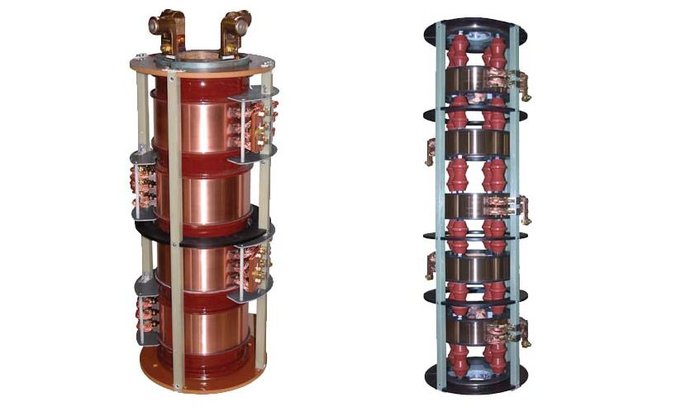
In this chapter, we’ll dissect these components, uncovering the layers of complexity that lie within the simplicity of a brush’s design. We will examine, through the lens of expert insights and case studies, how the selection of materials and the precision of design influence the motor’s journey from static to kinetic.
As we peel back the layers of various brush materials and designs, we will also address common misconceptions. Can any brush fit into any motor? Is it all about the material, or does the shape of the brush matter? How can you tell if a motor brush is reaching the end of its life?
Join us in unraveling these mysteries, where we’ll provide you with actionable advice coupled with theoretical knowledge, setting you on a path to becoming well-acquainted with the unseen heroes – the electrical motor brushes – that conduct power and command movement in the world of motors.
Types of Electrical Motor Brushes – The Right Tool for the Job
Choosing the right brush for an electrical motor isn’t a one-size-fits-all situation. Just as a mechanic wouldn’t use a hammer to tighten a bolt, the type of electrical motor brush used should match the specific needs of the motor and its overall functionality. This chapter will delve into the comparison of the two most common types of electrical motor brushes – carbon brushes and metal brushes – and guide you on how to select the perfect brush for your specific scenario.
Carbon vs. Metal Brushes: A Tug of War
At first glance, carbon and metal brushes might seem interchangeable. Both serve the primary purpose of transferring electricity to the motor’s armature, actuating movement. However, the devil is truly in the details.
Carbon Brushes: The Reliable Workhorse
Carbon brushes work hard and work well. They are known for their excellent electrical conductivity and low coefficient of friction, a characteristic that reduces wear and tear on both the brushes and the commutator. These properties make carbon brushes a boon for applications where endurance and consistency are key, such as in a household appliance or an electric car’s motor.
However, the advantages do not come without drawbacks. Carbon brushes can produce a significant amount of carbon dust during operation, which may cause damage to the motor if not adequately managed. Moreover, the softness of carbon brushes means that they wear down faster, necessitating regular replacements.
Metal Brushes: The High-Performance Contender
Metal brushes, particularly those made from precious metals like silver or gold, offer superior electrical conductivity and minimal sparking, leading to more efficient operation and longer life. This makes them suitable for high-performance or precision applications, such as in aerospace or medical equipment.
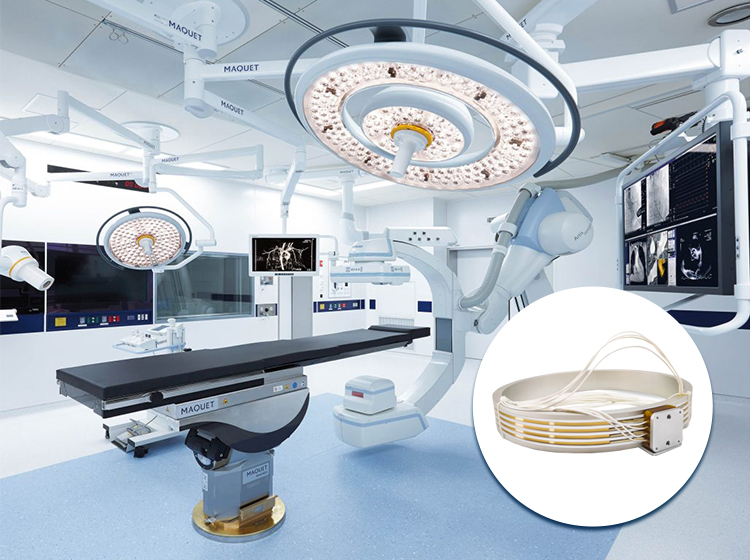
However, metal brushes are not without their disadvantages. They are more expensive than their carbon counterparts, and their hardness puts more wear on the commutator, which may lead to frequent maintenance or replacement.
Weighing the Options: Which Brush Belongs Where?
Choosing the right brush isn’t just about understanding the fundamental differences between carbon and metal brushes. Equally important is understanding the specific needs of each application. Is the motor in a low-use household appliance, or is it an integral part of an industrial machine running for hours on end? Understanding these requirements will help inform the right choice of brush.
Guiding Your Choice: Factoring in Motor Specifications
Motor specifications play a fundamental role in choosing the right brush. For instance, high-speed motors require brushes that can withstand the heat and friction produced. In contrast, low-speed motors might benefit more from brushes with superb conductivity for efficient power transfer.
In this chapter, we delve into these considerations, using practical examples to illustrate the importance of choosing the right brush. We also field common questions about brush selection, demystifying misconceptions, and providing tips on how to optimize your motor’s performance with the perfect brush.
By the end of this section, you aren’t just picking between carbon and metallic brushes. Instead, you are making an informed decision based on the many variables at play, ensuring the longevity and efficiency of your motor.
Maintenance of Electrical Motor Brushes – A Stitch in Time Saves Nine
Even the highest quality electrical motor brushes require regular attention to ensure their longevity and efficient performance. Neglecting the maintenance of these brushes can lead to premature wear, reduced motor performance, and even damage to the motor itself. This chapter delves into the key steps you can take to maintain your motor brushes effectively, touches upon when to replace worn-out brushes, and highlights the impact of brush wear on overall motor performance.
Essential Maintenance Tips: The Art of Brush Care
Maintaining your motor brushes goes beyond just replacing them when they wear out. Practices such as regularly cleaning accumulated carbon dust, inspecting brushes for even wear, and making sure the springs exert correct pressure can dramatically extend the lifespan of your brushes and maintain top-notch motor performance.
For instance, consider an electric motorcycle. Ensuring that the motor brushes are well-maintained and cleaned can significantly contribute to the bike’s overall performance, smooth acceleration, and prolong the battery life.
Inspecting and Replacement: Knowing When It’s Time
Motor brushes don’t age like fine wine; their performance decreases the more they’re used. Regular inspections are crucial to detect brush wear early on. Uneven wear, excessive sparking, and a decrease in motor efficiency are telltale signs of aging brushes.
When should you replace the brushes? Industry standards suggest that once a brush has worn down to about a quarter or third of its original length, it’s time for a replacement. But take heed, waiting until the last moment to replace brushes can lead to serious motor damage.
Impact of Brush Wear on Motor Performance: The Hidden Costs
Overlooking brush wear is a costly mistake. As brushes wear, they don’t make optimal contact with the commutator, reducing energy transfer efficiency, and leading to decreased motor performance and higher energy consumption. This can degrade the motor’s health over time, leading to expensive repair or replacement costs.
Think of brush maintenance as taking care of your car. Delayed oil changes can damage your car’s engine, drastically impacting performance, and causing complicated issues down the line. Similarly, delaying brush maintenance puts your motor at risk and negatively influences its potential.
This chapter hopes to arm you with an understanding of preventative brush care measures, create a clear idea of when to replace aging brushes and make you aware of the potentially costly risk of overlooking brush maintenance. By incorporating these practices into your regular motor-care routine, you can ensure your motor continues to run efficiently and reliably throughout its life.
Common Issues with Electrical Motor Brushes – Mingling with Malfunctions
Like any component subjected to constant use and wear, electrical motor brushes can encounter several issues. Recognizing the signs of wear and damage, troubleshooting common problems, and implementing preventive measures are all crucial skills for ensuring optimal motor performance. This chapter aims to provide an overview of the common issues associated with electrical motor brushes and provide practical, usable solutions to tackle these challenges head-on.
Decoding the Signs: Identifying Wear and Damage
Identifying signs of wear and damage on motor brushes is akin to a motor whisperer translating the hidden tales of bruised and battered brush bristles. Uneven wear, discoloration, deep grooves, excessive sparking, or poor spring tension are evident signs of trouble.
Consider the case of an industrial conveyor belt slowing down intermittently. If the motor’s brush shows uneven wear or excessive sparking, it’s likely at the root of the issue, resulting in inconsistent power transfer to the rotating armature.
Troubleshooting 101: Determining and Resolving Common Problems
Every problem with electrical motor brushes has its unique fingerprint — a specific symptom, or a combination thereof — pointing to its cause. For instance, if a brush is arcing, it may be due to a worn brush, poor seating, or spring tension issues.
Similarly, a motor that has lost power or operates intermittently might be a sign of severely worn or damaged brushes. The key to effective troubleshooting lies in accurately correlating the symptoms to their cause and thereafter, applying the right fix.
Prevention is Better Than Cure: Avoiding Premature Brush Failure
Creeping catastrophic failure often finds its roots during routine operations, making preventive maintenance a veritable shield against premature brush failure. Strategically selected brush grades, correct brush installation procedures, regular brush inspections, and defined preventive maintenance routines can significantly boost the lifespan of your motor brushes.
Imagine running a manufacturing plant where the motors must operate continuously. A sudden brush failure could cause unexpected downtime and adversely affect productivity. By enacting preventive measures, you not only ensure smooth operation but also secure your investments in machinery.
In this chapter, we’ll delve into the nitty-gritty of common motor brush issues, offering practical advice and real-world examples to decode the clues of brush wear, solve common problems effectively, and prevent premature brush failure. By the end, we aim to equip you with the knowledge to navigate these issues, ensuring that your motor keeps running smoothly, effectively, and efficiently.
Innovations in Electrical Motor Brush Technology – Looking Toward the Future
Innovation has continuously pushed the boundaries of what we can achieve with electrical motor brush technology. The advent of new materials, design concepts, and technology-enabled advancements holds the promise of improved brush life, enhanced efficiency, and innovative applications. This chapter explores these advancements and reflects on future trends, providing a glimpse into the exciting future of electrical motor brush technology.
Recent Advancements: A Brush with the Future
Like with any technology, constant advancements in material science and design engineering have spurred improvements in motor brush technology. For instance, new materials like silver graphite offer superior electrical and thermal conductivity, while design innovations, such as optimized brush shapes and holder designs, can dramatically reduce wear and improve reliability.
Let’s consider the wind power industry. High-resilience materials and advanced brush designs have been instrumental in enhancing the overall lifespan and efficiency of the motors in wind turbines, contributing to this industry’s sustainability and economic viability.
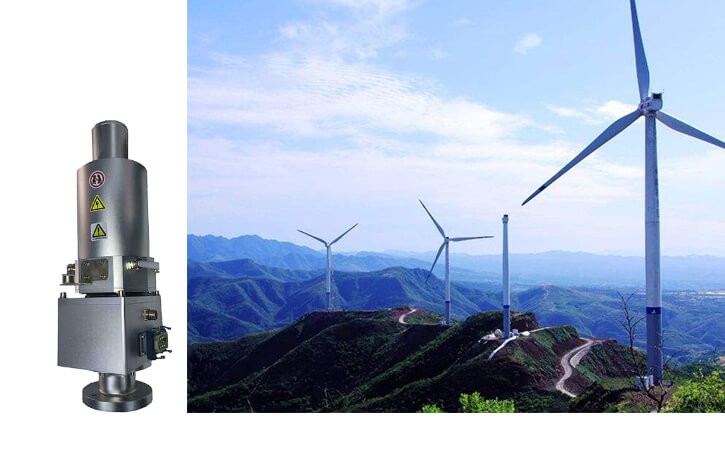
Technological Intervention: Long Life and Peak Efficiency
Technological developments have a significant role in extending life and improving the efficiency of motor brushes. Technologies like digital 3D modeling enable precise brush design, automated visual inspection systems can monitor wear more effectively, and IoT-enabled predictive maintenance strategies help prevent premature brush failures.
Visualize modern trains powered by advanced electric motors. These rely heavily on technology-enabled monitoring systems to ensure brushes are operating at maximum efficiency and are replaced optimally, preventing unexpected downtimes and ensuring reliable service.
Future Trends: The Road Ahead
As we propel forward, the brush technology landscape is set to transform with smart materials that self-adjust their behavior under changing operating conditions and self-healing brushes that can rejuvenate worn surfaces, prolonging brush life.
Moreover, advances in AI and data analytics pave the way for smart maintenance systems that predict brush replacement needs accurately, maintaining peak motor performance while reducing maintenance costs.
This chapter aims to inspire by showcasing how continuous advancements are revolutionizing the realm of motor brush technology. We’ll explore these cutting-edge developments while offering real-world examples to elucidate each innovation’s potential impact. These insights help you stay abreast of the breakthroughs shaping the motor brush industry, allowing you to capitalize on these trends and adaptations in your applications.
Choosing the Right Electrical Motor Brushes for Your Needs – A Tailor-Made Approach
Selecting the right electrical motor brushes is not just about replacing a component; it’s about enhancing the performance, efficiency, and longevity of the motors powering our world. Whether it’s for home appliances that streamline our daily tasks, the cars we drive, or the machinery that drives the industry, understanding how to choose the right motor brushes is fundamental. This chapter will guide you through the factors to consider, emphasize the importance of compatibility, and offer recommendations tailored to various uses.
Crafting Your Selection: Factors to Consider
Choosing the right motor brush is akin to selecting the right ingredient for your recipe; the outcome significantly depends on making informed decisions. Factors such as the type of motor (AC/DC), operating speeds, the environment (temperature, humidity), load conditions, and even the physical space available for the brush assembly play critical roles in your selection process.
For instance, carbon brushes, popular for their versatility and efficiency, might be preferred in high-speed applications or where minimizing electrical noise is crucial. On the other hand, graphite brushes, with their natural lubricating properties, could be favored for operations where minimal wear is a priority.

A Harmonious Match: Compatibility with Motor Type and Application
The synergy between motor brushes and the motor’s design and intended use cannot be overstressed. Using the wrong type of brush can not only degrade motor performance but also lead to premature failure of both the brush and the motor.
Consider an electric vehicle (EV). Here, the motor brushes need to withstand high levels of electrical current and frequent start-stop cycles, demanding materials and designs specialized for durability and conductivity.
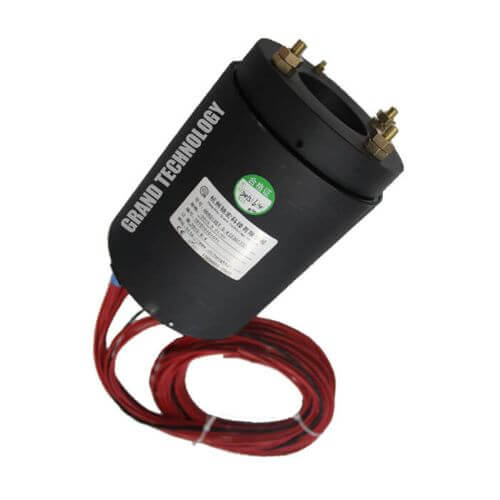
Tailored Recommendations: Brushes for Every Use
Home Appliances
In-home appliances like vacuum cleaners and blender brushes that balance efficiency with durability are paramount. Carbon brushes are often preferred here for their reliability and effectiveness in varied load conditions.
Automotive
In the automotive sector, especially in starter motors and alternators, brushes need to provide consistent performance across a range of temperatures and conditions. Materials that can endure these rigorous demands, such as copper-graphite, are ideal.
Industrial
Industrial applications often require brushes that can withstand long operational hours, high temperatures, and harsh environments. Electrographic brushes are known for their resilience and ability to maintain performance in these scenarios.
By incorporating real-world examples, this chapter aims to simplify the complexity behind choosing the right motor brushes for various applications. Whether you’re a hobbyist working on a DIY project, an automotive engineer, or an industrial overseen, understanding these principles ensures not just the success but also the sustainability of your projects. Through careful consideration and selection, the right motor brush can significantly amplify the performance and lifespan of your motors, ensuring they meet and exceed the demands of their intended applications.


